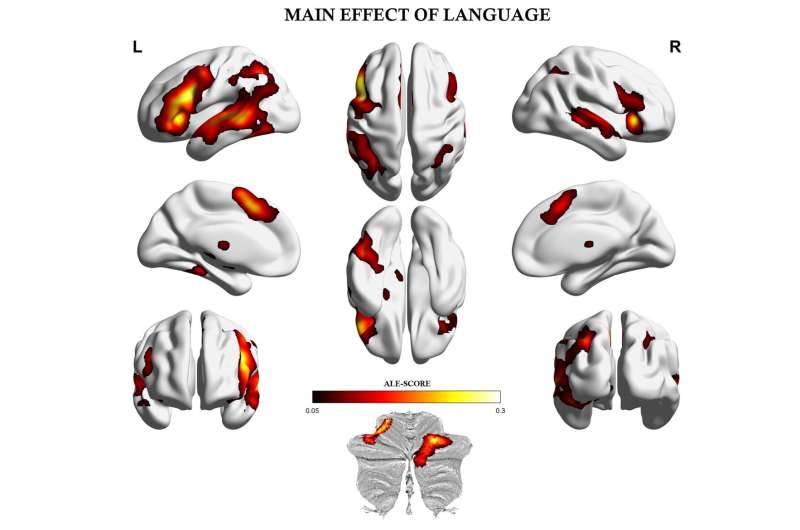This article has been reviewed according to Science X's editorial process and policies. Editors have highlighted the following attributes while ensuring the content's credibility:
fact-checked
peer-reviewed publication
trusted source
proofread
New insights into how the human brain organizes language

A new study has provided the first clear picture of where language processes are located in the brain. The findings may be useful in clinical trials involving language recovery after brain injury.
Dr. Sabrina Turker, Dr. Philipp Kuhnke and Professor Gesa Hartwigsen from the Wilhelm Wundt Institute of Psychology at Leipzig University and the Max Planck Institute for Human Cognitive and Brain Sciences conducted the meta-analysis in collaboration with researchers from Forschungszentrum Jülich. They have published their findings in the journal Psychological Bulletin.
Language is the most important tool for human communication and essential for life in our society. "Despite a great deal of neuroscientific research on the representation of language, little is known about the organization of language in the human brain. Much of what we do know comes from single studies with small numbers of subjects and has not been confirmed in follow-up studies," says Turker. This meta-analysis aims to help change that.
Based on more than 400 neuroscientific experiments using functional imaging and involving more than 7,000 subjects, the analysis provides in-depth insights into how the brain organizes language. A quantitative, coordinate-based meta-analysis was used to integrate the many findings from different studies in the most complete and objective way possible. This makes it possible to see where the brain is activated when particular language processes occur.
This approach provides insights into fundamental principles of how the brain organizes language processing. The researchers not only studied language as a process in general, but also explicitly addressed subordinate processes: the meaning of language at the level of words and sentences (semantics); the phonetic structure of language (phonology); grammar and the arrangement of linguistic elements (syntax); and the phonetic structure of language at sentence level, including melody, intonation and rhythm (prosody).
In addition to the classical language regions in the left hemisphere of the brain, the authors of the study found that structures in the brain regions below the cerebral cortex and the cerebellum play a key role in language processes.
"These regions have been rather neglected in previous neuroscientific research on language," says Hartwigsen, Professor of Cognitive and Biological Psychology at Leipzig University. "In particular, the left and right cerebellum are involved in processes related to the meaning of language and the processing of sounds. Similarly, phonetic patterns that transcend individual words and also convey emotional meaning are associated with activation in the right amygdala, a paired core area of the brain." She points out that this part influences emotion and memory.
She adds, "Our findings may serve future studies involving language recovery after brain injury, for example caused by stroke. And they could help to refine models of language processing."
More information: Sabrina Turker et al, Cortical, subcortical, and cerebellar contributions to language processing: A meta-analytic review of 403 neuroimaging experiments, Psychological Bulletin (2023). DOI: 10.1037/bul0000403



















